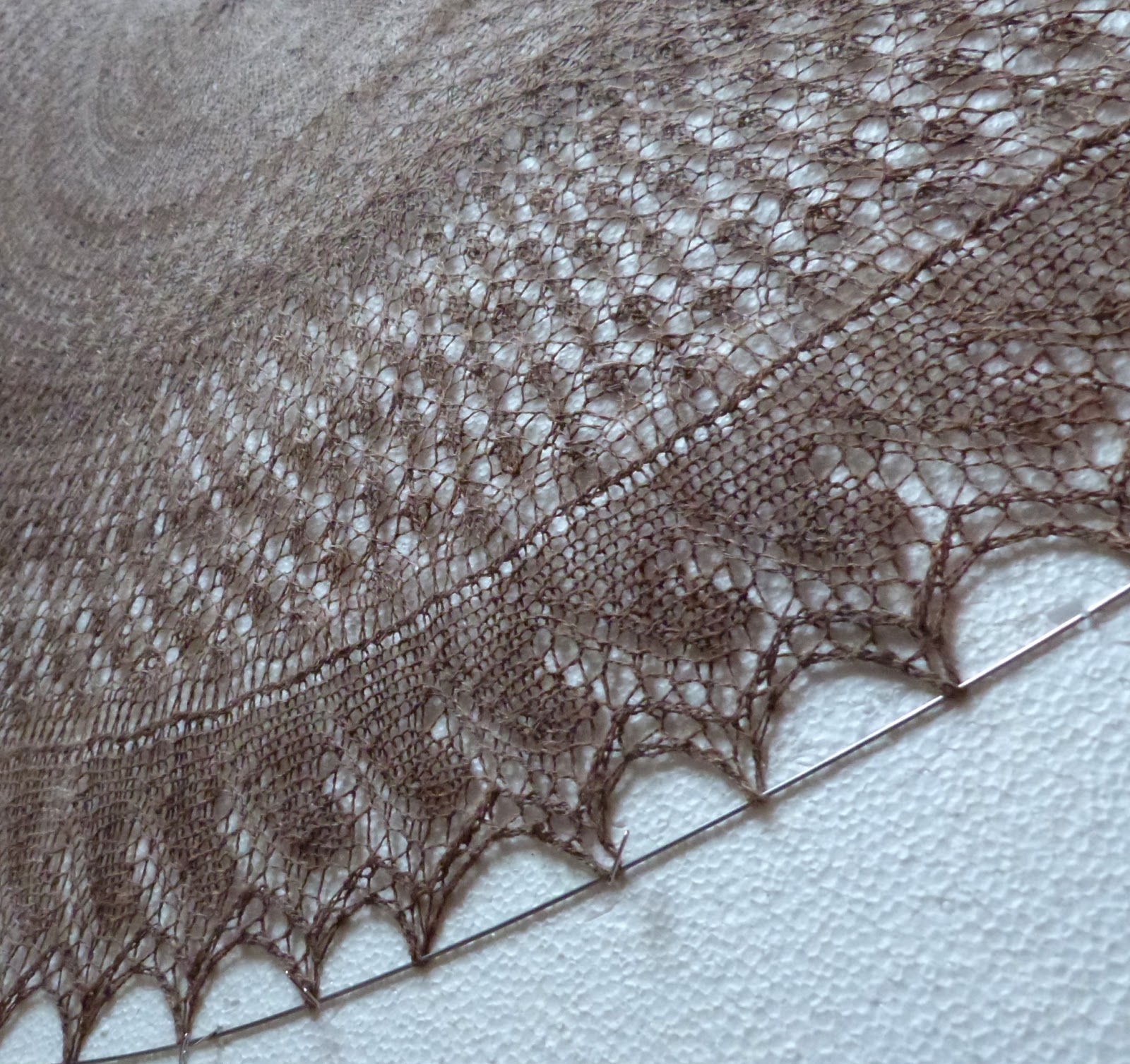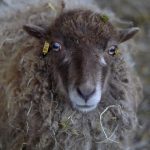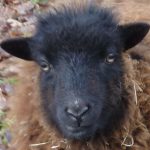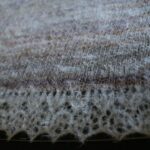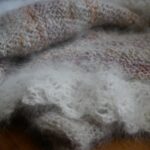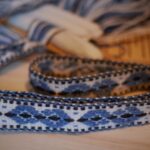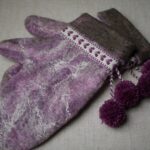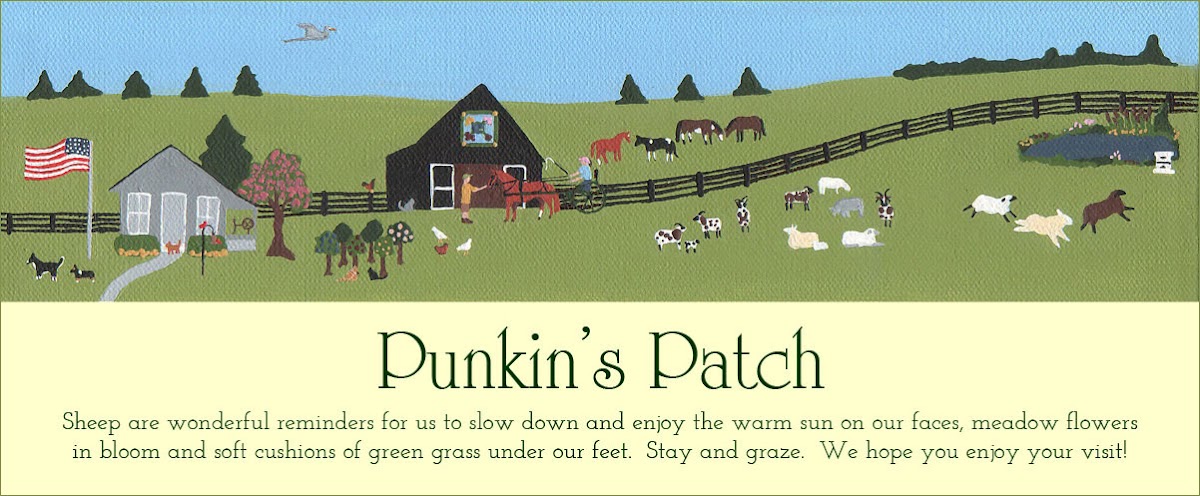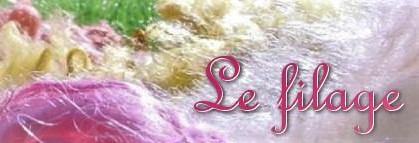De la Toison au Tricot n° 145 : Le Châle Gobemouche – dernier indice !
Alright ! I just finished the last clue of the Gobemouche mystery KAL ! This little shawl turned out to be quite a beauty !
Ça y est ! Je viens de boucler le KAL mystère Gobemouche ! Quelle petite merveille, ce joli châle !

First, a big “thank you” to Praline, my little brown Ouessant ewe, who produced the wool for this shawl. But also a big “thank you” to Ambre at the Nid de Vigogne, the designer of this lovely pattern.
The last clue of this KAL went pretty fast with a quick decrease in the number of stitches.
D’abord, un grand merci à Praline, brebis Ouessant brune, qui a produit la laine pour ce châle. Mais aussi, un grand merci à Ambre du Nid de Vigogne, la styliste de ce joli modèle.
Le dernier indice du KAL se tricote assez vite avec une diminution très rapide de mailles.
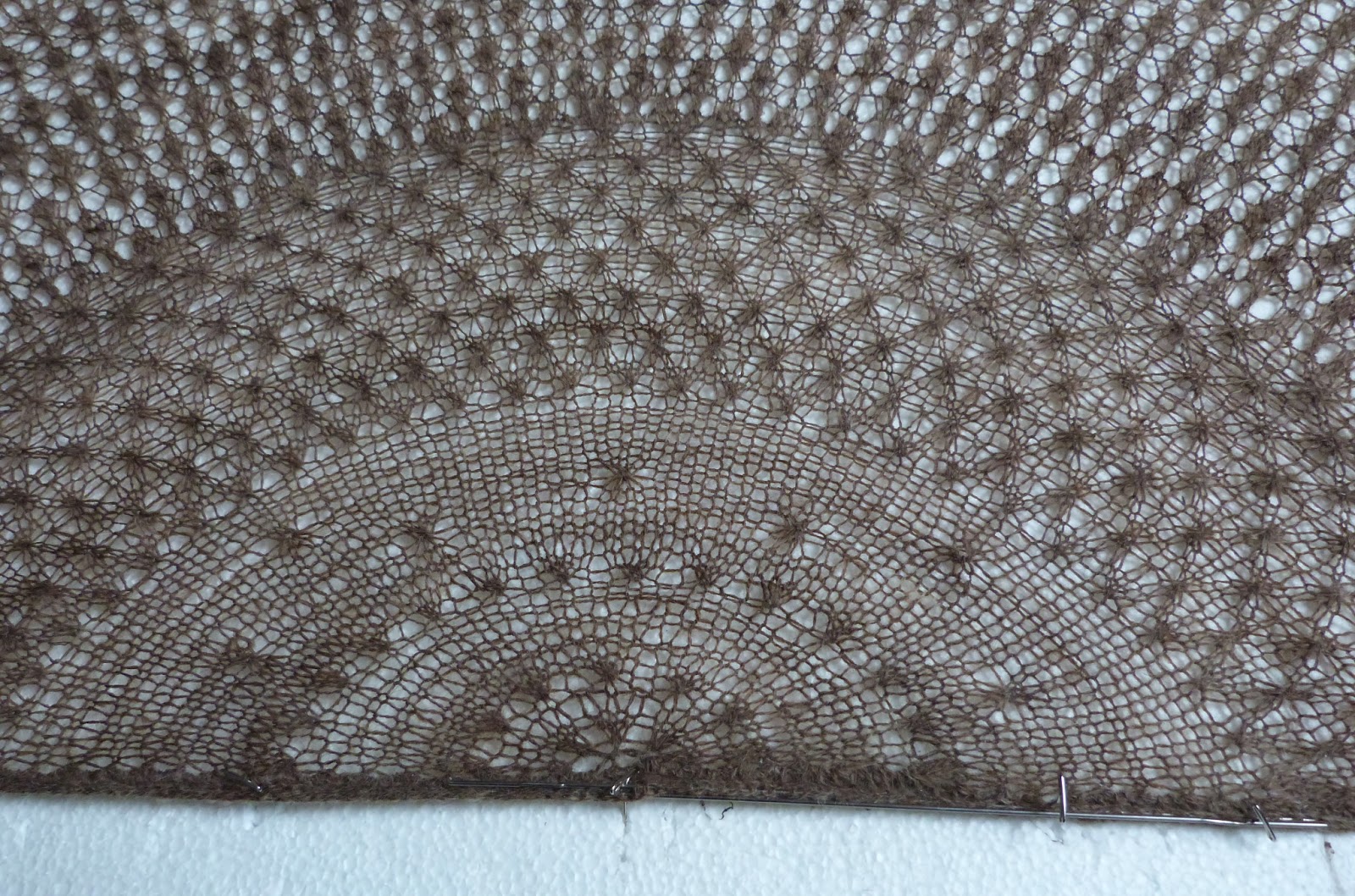
I made one modification to the pattern. I don’t really like the edge of the shawl — or rather the lack of an edge. I’m talking about the edge that is formed (or not) at the beginning and end of every row and not the lace edging with its pretty points. Quite often a few stitches at the beginning and end of each row are worked in garter stitch : this forms a bit of an edge to the shawl. To be quite honest, I really don’t like how this shawl looks without a bit of an edging : the end stitches seem very fragile to me. In the end, I decided a add an I-cord edging. The I-cord forms a type of knit tube all along the edge of the shawl. I find that this seems to reinforce the structure of the shawl itself.
J’ai fait une petite modification au modèle. Je n’aime pas trop le bord du châle – ou plutôt le manque de bord. Il s’agit du manque de bord qui se forme (ou pas) au commencement et à la fin de chaque rang, et non pas du bord en dentelle avec ses jolis points. Souvent il y a quelques mailles travaillées en point mousse qui sert comme bord au commencement et à la fin de chaque rang. Pour être honnête, je n’aime pas trop le rendu sans bord : il me semble que les mailles du “bord” sont un peu fragiles. Finalement, j’ai décidé d’ajouter un petit bord en I-cord. L’I-cord forme une espèce de tube tout au long du bord. Je trouve que ça “solidifie” l’ensemble.
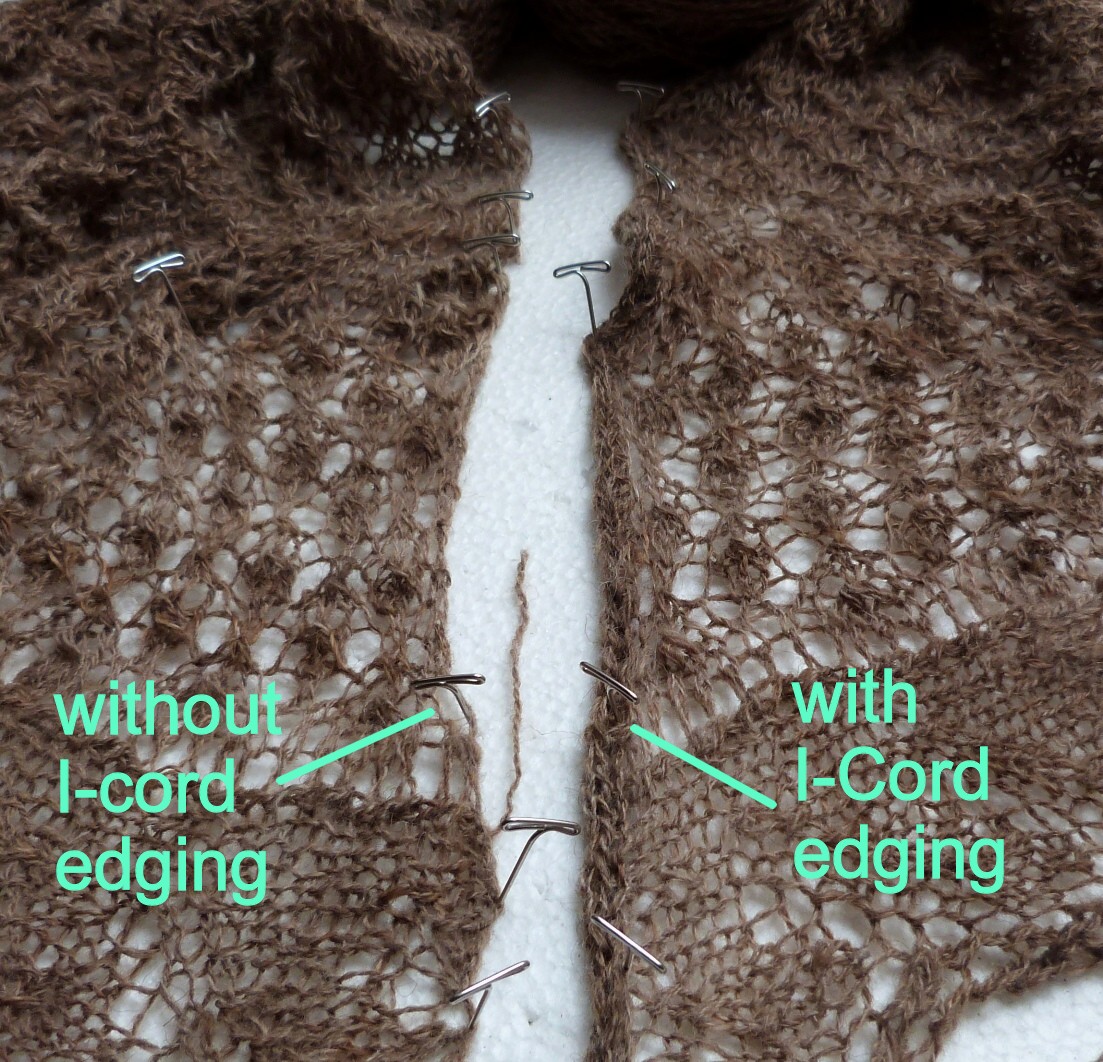
Also, the I-cord edging makes it much easier to block this shawl. But be careful ! You need to knit the I-cord edging loosely so that the edge of the shawl remains stretchy.
En plus ce bord en I-cord fait en sort que le châle est nettement plus facile à étirer lors de la mise en forme. Mais attention : il faut tricoter assez lâche pour que le bord reste “élastique”.
